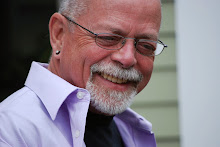Monday, April 18, 2011
Getting to safety
Today, the paper and the blogs carry the news of the Oregon Study out of Columbia University, funded by the National Institutes of Health and the Fenway Institute in Boston, and published in the journal Pediatrics. The study, by Professor Mark Hatzenbuehler, Psychologist at Columbia University, shows that suicide rates among teenagers are dependent upon which county a teenager lives in—the prevalence of same-sex couples, registered Democrats, liberal views in the community, schools with gay-straight alliances, schools with policies against bullying students, schools with anti-discrimination policies that include sexual orientation. The ranking of various counties by these measures is called a social index score. Teenagers who live in counties with the lowest social index scores were 20% more likely to have attempted suicide than gay teenagers in counties with the highest social index scores.
Several years ago, I attended a panel discussion in Cambridge on Gay Youth. One of the panel participants, a young man who was editor of a “youth oriented” magazine, said that the trouble is that if any of us were over thirty, we knew nothing about the lives of gay youth today. He said that the determining factor in the lives of all gay youth up to now was the sense that I am alone. There is no one else like me. At least one of the things that coming out meant was coming out into the gay community and the breaking down of that sense of being alone. Today’s youth, according to this editor, have the internet. They are never really alone and never even think they are alone.
The teenager in the family with easy access to the internet still may spend his most vulnerable pre-teen years—that is, ten and eleven or twelve—on the internet unaware of what the internet can be used for, still looking for cute cat videos on You Tube. For the internet to be useful in the coming out process for the much younger children, many things have to have come together—the changes in the child’s feelings, his having learned what words to apply to his feelings, his discovery that the web is a place for him to look for answers, his learning how to use the web—and different children put all this together in different ways and at different times. I would guess that, if a child has hostile parents, knowing that it is possible to find something different on the web is not going to be very helpful. And if the home is not a welcoming place, then a child faces harsh years before he can get to the safety of that gay-straight alliance in high school.
Check out the Stonewall Triptych, three gay novels by Dwight Cathcart.
Several years ago, I attended a panel discussion in Cambridge on Gay Youth. One of the panel participants, a young man who was editor of a “youth oriented” magazine, said that the trouble is that if any of us were over thirty, we knew nothing about the lives of gay youth today. He said that the determining factor in the lives of all gay youth up to now was the sense that I am alone. There is no one else like me. At least one of the things that coming out meant was coming out into the gay community and the breaking down of that sense of being alone. Today’s youth, according to this editor, have the internet. They are never really alone and never even think they are alone.
The teenager in the family with easy access to the internet still may spend his most vulnerable pre-teen years—that is, ten and eleven or twelve—on the internet unaware of what the internet can be used for, still looking for cute cat videos on You Tube. For the internet to be useful in the coming out process for the much younger children, many things have to have come together—the changes in the child’s feelings, his having learned what words to apply to his feelings, his discovery that the web is a place for him to look for answers, his learning how to use the web—and different children put all this together in different ways and at different times. I would guess that, if a child has hostile parents, knowing that it is possible to find something different on the web is not going to be very helpful. And if the home is not a welcoming place, then a child faces harsh years before he can get to the safety of that gay-straight alliance in high school.
Check out the Stonewall Triptych, three gay novels by Dwight Cathcart.

0 comments:
Post a Comment